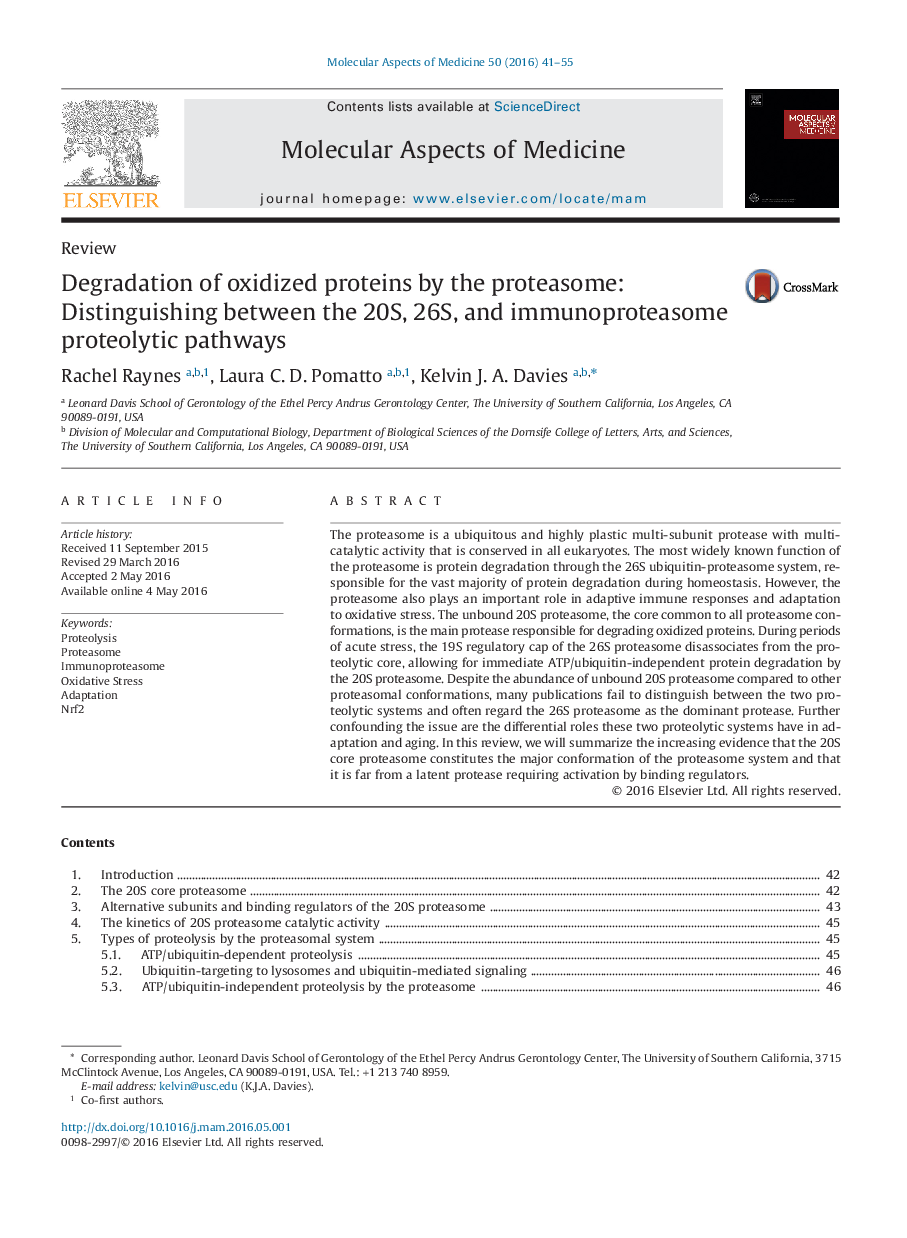| Article ID | Journal | Published Year | Pages | File Type |
|---|---|---|---|---|
| 1995569 | Molecular Aspects of Medicine | 2016 | 15 Pages |
The proteasome is a ubiquitous and highly plastic multi-subunit protease with multi-catalytic activity that is conserved in all eukaryotes. The most widely known function of the proteasome is protein degradation through the 26S ubiquitin-proteasome system, responsible for the vast majority of protein degradation during homeostasis. However, the proteasome also plays an important role in adaptive immune responses and adaptation to oxidative stress. The unbound 20S proteasome, the core common to all proteasome conformations, is the main protease responsible for degrading oxidized proteins. During periods of acute stress, the 19S regulatory cap of the 26S proteasome disassociates from the proteolytic core, allowing for immediate ATP/ubiquitin-independent protein degradation by the 20S proteasome. Despite the abundance of unbound 20S proteasome compared to other proteasomal conformations, many publications fail to distinguish between the two proteolytic systems and often regard the 26S proteasome as the dominant protease. Further confounding the issue are the differential roles these two proteolytic systems have in adaptation and aging. In this review, we will summarize the increasing evidence that the 20S core proteasome constitutes the major conformation of the proteasome system and that it is far from a latent protease requiring activation by binding regulators.
